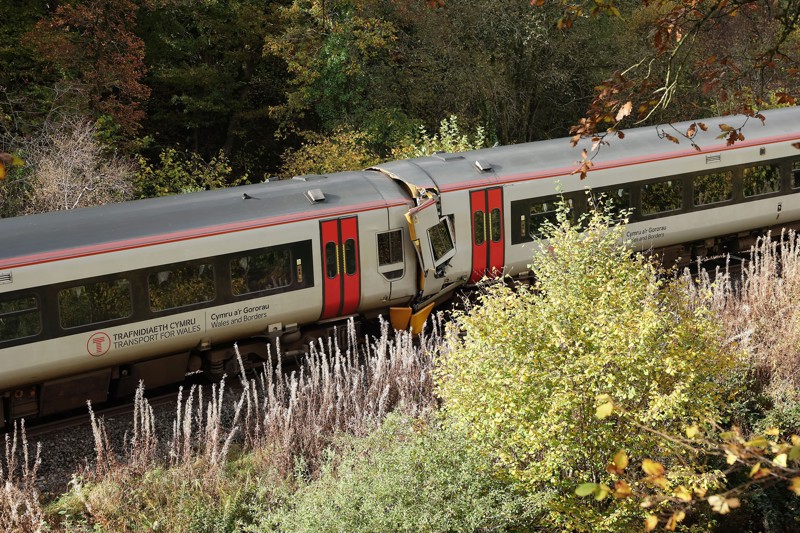
Four defects have been found with the sanding equipment on the leading carriage of a Class 158 involved in the head-on collision in which one passenger died.

Four defects have been found with the sanding equipment on the leading carriage of a Class 158 involved in the head-on collision in which one passenger died.
In its interim report of the collision involving two Transport for Wales (TfW) ‘158s’ near Talerddig at 1926 on October 21 2024, the Rail Accident Investigation Branch (RAIB) said no sand was discharge from the automatic or emergency sanders on the leading vebicle of the unit that failed to stop in the moments immediately before impact.
The 1831 Shrewsbury-Aberystwyth service, formed of 158841, was supposed to stop in the Up loop to allow the oncoming 158824, operating the 1909 Machynlleth-Shrewsbury, to pass, but collided west of the loop travelling at approximately 24mph and 6mph respectively.
One man subsequently died and four other people, including the driver of 158824, were seriously injured.
RAIB said the adhesion index for that day forecast ‘moderate to poor’ grip for the area, estimating 3-4% of the season’s leaves on the ground that morning with more expected to fall during the day.
The report said the driver of 158841 shut off power 1,900 metres before the stopping point in the Up loop at Talerddig before making to step 1 brake applications to bring the unit’s speed down from 77mph to 58mph.
Further braking applications by both the driver and on-board signalling system were made as the train climbed the 1:80 and 1:91 gradients towards the loop (which is mainly level).
RAIB said on-train data recorder information showed the unit’s wheels began to slide approximately one second after automatic braking intervention when they train was just over 600m away from the stopping point.
The on-board system applied the emergency brake as that distance reduced to 500m.
The report said: “The driver of train 1J25 then used the train’s GSM-R radio to call the signaller to report that the train was sliding and was probably going to pass the block marker.”
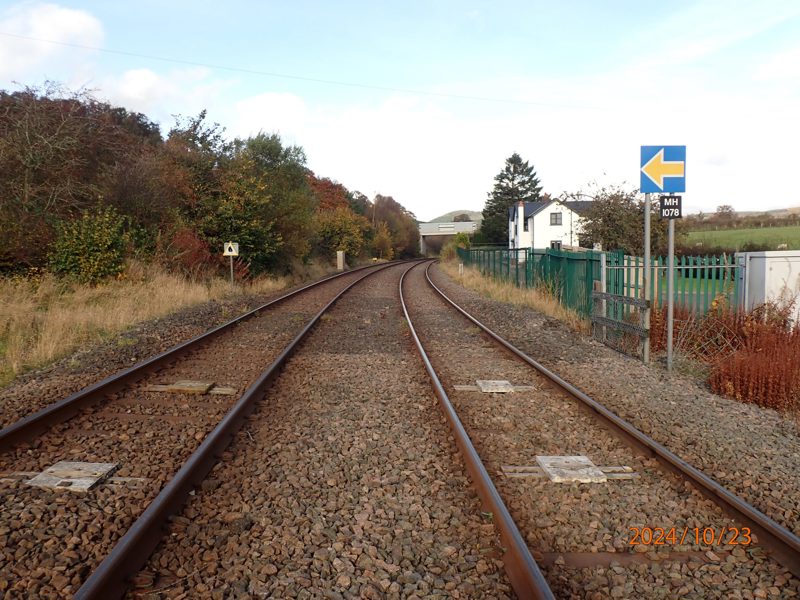
158841 then passed the stopping point at approximately 34mph and into a designated low adhesion area, running through the points at approximately 20mph before picking up speed as it descended the 1:57 and 1:52 gradients towards 158824.
The two units collided approximately 1,080 metres after 1J25’s intended stopping point.
"RAIB has concluded from the available evidence that neither the automatic sander nor the emergency sander on this vehicle discharged sand in the moments immediately before the collision," the report said.
Inspections of the automatic sanding system on the leading carriage of 158841 identified four defects.
The report said the sander isolation switch, which provides electrical power to the automatic system, was not allowing current to pass. It also said the low-speed relay, which is intended to prevent sand from being discharged at below 6mph was defective. RAIB said these faults would have prevented the automatic sander from operating if present at the time of the collision.
Inspectors also found sand delivery hoses on 158841 were blocked and that orifice plates part of the sander pneumatic system, had been installed incorrectly. Both plates were upside down while one was also incorrectly aligned, errors that could “lead to a reduced sand delivery rate”.
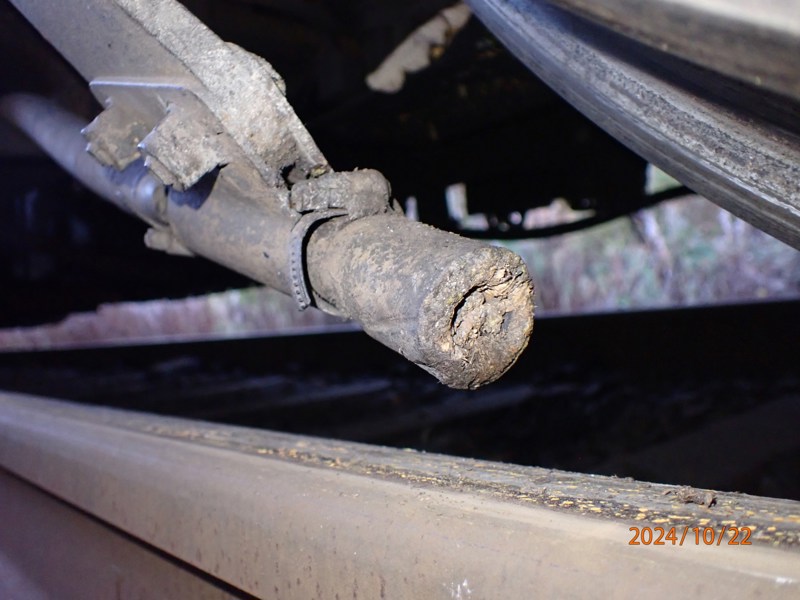
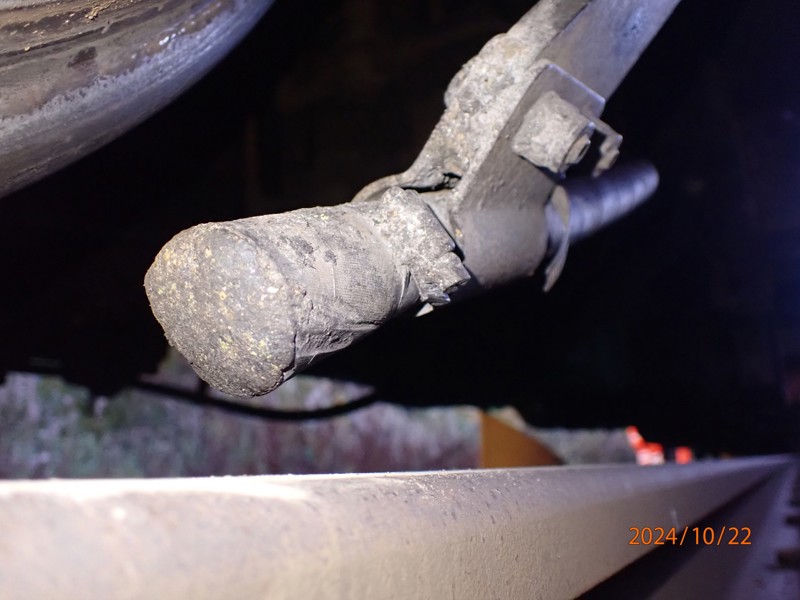
RAIB acknowledged that the electrical faults may have been present at the time of the collision or developed because of either the impact or recovery and storage.
Further examinations found a “plug of material approximately 30mm deep” blocking the sand hose consisting of some sand-like material and other debris including leaves from a variety of trees.
158841 was supposed to have been stabled at Crewe maintenance depot the night before the crash, however disruption mean it was parked in a platform at Chester station.
On the morning of October 21, a driver prepared the unit for service but could not access the underframe which includes the sander test button.
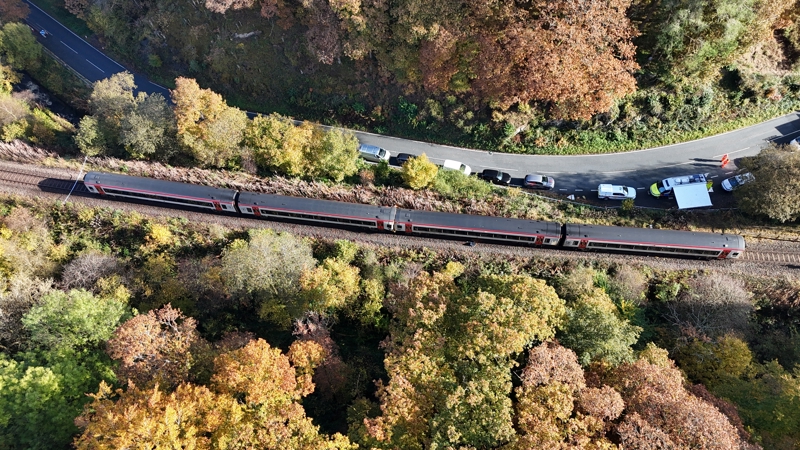
However, the seit underwent a ‘Fuel Point Examination’ at Machynlleth depot on the night of October 19/20. This would have included checking the automatic sanders, which would have been tested again on the morning of October 20 when it was prepared for service.
TfW has since raised two National Incident Reports that describe the risk of blocked sander hoses and electrical defects identified with automatic sanding systems, and the additional checks needed for both.
In a statement, the operator said: “Safety is always our main priority for our customers and colleagues, and we’ll continue to work together with investigators to fully understand what happened and await the full conclusion and recommendations of the investigation.”
The two units remain at Machynlleth depot but are set to be moved later this spring or summer.
RAIB continues to investigate the collision, with work to include establishing the cause and severity of low wheel-rail adhesion at Talerddig, testing the braking, wheel slide protection and sanding systems on 158824, consider the actions of both drivers and signaller, actions taken on the day to manage the risk of low adhesion, consider Network Rail’s policies and processes relating to low adhesion and risk management, TfW’s operating policies and processes during low adhesion and how the Cambrian European Rail Traffic Management System was intended to be operated in low adhesion.
Login to continue reading
Or register with RAIL to keep up-to-date with the latest news, insight and opinion.


















Dr P. N. Jarvis - 30/04/2025 17:15
Do you remember the magnetic track brakes on the old Liverpool trams? They held very well even on steep gradients, so long as the tram remained on the rails.